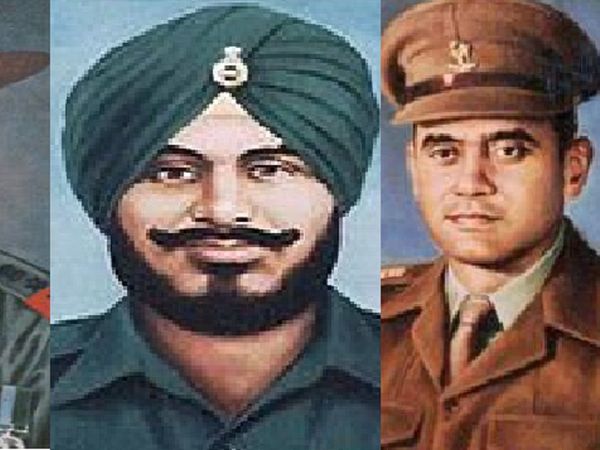
SOURCE: TIMES NOW
The ongoing standoff along the Line of Actual Control (LAC) with the Chinese People’s Liberation Army (PLA) has refreshed the memories of the 1962 Sino-Indian conflict along the heights of the Himalayas. Quite unexpected, India was attacked by the Chinese troops in the Chip chap Valley in the western theatres and along the Namka Chu river in the eastern theatre on October 20, 1962 – 48 years ago on this day.
What began that day and lasted for a month, till, on November 20, 1962, when a ceasefire was declared, came to be known as the Sino-Indian conflict of 1962. Often referred to as the ‘Himalayan Blunder’ – in line with Brigadier John Dalvi’s book with the same name – that followed then prime minister Jawaharlal Nehru’s flawed ‘forward policy’, the Sino-Indian conflict changed India’s outlook towards China for years that followed.
As scantily equipped troops of the Indian army bravely fought the outnumbering Chinese men in conversely proportional mountain warfare, what emerged, besides the military-diplomatic lessons for the political leadership, were tales of bravery, valour and sacrifice in the name of faith and nation. The battle proved that India’s gallant armed forces never failed to make the country proud, even in the moment of unsubstantiated political decisions that led to creating the perception of this conflict as a ‘debacle’. On this day, we remember some of India’s bravehearts who were honoured with the highest military decorations during this historic conflict.
Lt Col Dhan Singh Thapa, PVC: 1st Battalion, 8 Gorkha Rifles
According to his Param Vir Chakra citation, ‘Major Thapa was in command of a forward post in Ladakh, when, on October 20, 1962, it was attacked by the Chinese in an overwhelming strength’. In mountain warfare, where, those on the heights overpower those at the slopes, Thapa’s post was outnumbered and came under intense artillery and mortar fire from the Chinese side.
Despite three consecutive attacks by the Chinese troops, each time with more firepower, backed by tanks and infantry, Thapa’s post retaliated with great force, causing ‘heavy losses to the enemy’.
“Major Thapa got out of his trench and killed several of the enemies in hand-to-hand fighting before he was finally overpowered by Chinese soldiers. Major Thapa’s cool courage, conspicuous fighting qualities and leadership were in the highest traditions of our Army,” his citation reads. Thapa was held a Prisoner of War (PoW) and subjected to torture by the Chinese. He was released from captivity in November 1962 after the ceasefire. He later rose to the rank of a Lt Colonel and retired from the Army on April 30, 1980. Thapa passed away in 2005 in Lucknow.
Subedar Joginder Singh, PVC: 1 Sikh Regiment
Subedar Joginder Singh was commanding a platoon of Sikh Regiment holding a defensive position at a ridge near Tongpen La in NEFA. In the early hours of October 23, 1962, the Chinese troops launched attacks in multiple waves. The platoon lost half of its men under the Chinese attack.
“Subedar Joginder Singh was wounded in the thigh but refused to be evacuated. Under his inspiring leadership, the platoon stubbornly held its ground and would not withdraw. Meanwhile, the position was attacked for the third time. Subedar Joginder Singh himself manned a light machine-gun and shot down a number of the enemy,” reads his citation.
Finally, Singh and his men charged with bayonets but were outnumbered by the Chinese. In Param Vir: our heroes in battle, Major General Ian Cardozo writes that upon hearing about his martyrdom his elder daughter died. Singh’s ashes were later sent to India by China in May 1963.
Major Shaitan Singh, PVC, 13 Kumaon
An officer of the Kumaon Regiment of the Indian Army, Major Shaitan Singh was commanding a company of an Ahir infantry battalion deployed at Rezang La in the Chusul sector at 16,000 feet. Major Singh’s company position came under heavy artillery attack from the Chinese side on November 18, 1962. Major Singh was seriously wounded when he ‘moved at great personal risk from one platoon post to another sustaining the morale of his hard-pressed platoon posts’.
It was because of his bravery that for every one Indian Army man lost at the battlefield, the enemy lost four or five, the PVC citation reads. “When Major Shaitan Singh fell disabled by wounds in his arms and abdomen, his men tried to evacuate him but they came under heavy machine-gun fire. Major Shaitan Singh then ordered his men to leave him to his fate in order to save their lives,” reads his citation.
A tanker by the Shipping Corporation of India was named after Major Shaitan Singh, PVC in 1985 in memory of the braveheart.






